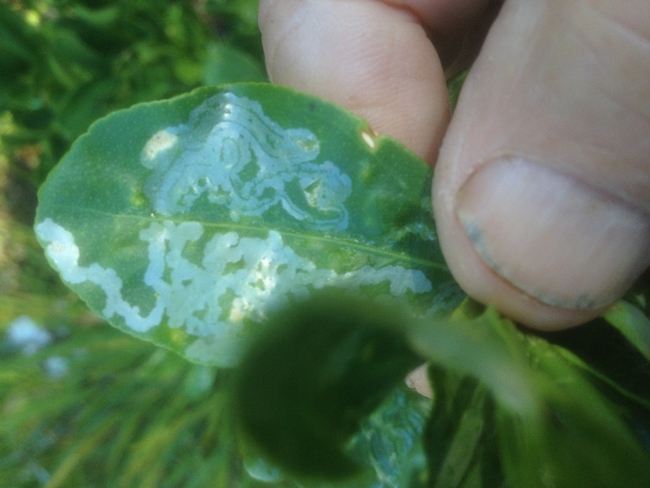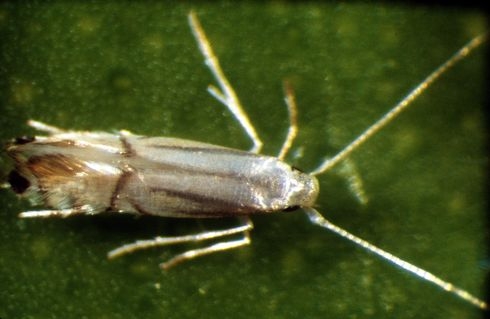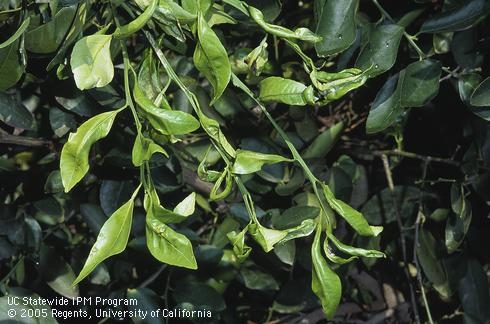Who's Been Mining My Citrus?
Advice for the Home Gardener from the Contra Costa Master Gardeners Help Desk
Description of the client's problem:
The client has citrus trees that are not doing well. It looked like a pest, but she couldn't detect any insects. There are deformed and curling leaves with curvy track marks, especially on the new growth.
Advice From the CCMG's Help Desk:
The pest that is causing the new leaf growth on your citrus trees to curl is most likely the Citrus Leaf Miner. The adult stage is a very small moth, which lays eggs on young citrus leaves. When the larvae emerge from the eggs a week or so later, they bore into the leaves and begin feeding, leaving minute trails observable on the surface of the leaves. As the larvae grow, the trails become more pronounced and noticeable.
After feeding for two to three weeks inside the leaf tissue, the larva emerges and enters a pupal stage. At this point, the leaf curls over the pupa to protect it. The pupal stage lasts from one to three weeks. Because the life cycle moves so quickly (between three and seven weeks, depending on the ambient temperatures), multiple generations of the pest can develop in warm weather.
You can see photos of the leaf miner moth and the damage it causes at this website: http://www.ipm.ucdavis.edu/PMG/PESTNOTES/pn74137.html. This website also contains information about management of this pest.
Except for the aesthetics of the damage, mature citrus trees (those over four years of age) can usually sustain damage from leaf miners with relatively little effect on the overall health of the tree and without loss to fruit production. Less mature trees (under 4-5 years) or trees that are heavily infected may sustain bigger setbacks, but leaf miner attack is rarely fatal.
Since the leaf miner pest typically attacks only the new leaf growth regardless of the age of the tree, there are some cultural strategies that you can use to reduce the prevalence of the new growth, such as limiting pruning to once a year (pruning encourages new growth), going easy on fertilizing, and not over-watering. Past experience with this leaf miner indicates that we might see a year or two of damaged trees as it has only just arrived in our area, but as the natural enemies develop, it should be less of a problem. Use of pesticides is not recommended at this time and in most instances would be ineffective because the miner is inside the leaf and it may kill off beneficial insects.
Hopefully this information answers your question and will help you managing this pest. Please do not hesitate to contact us again if you have questions.
Contra Costa Master Gardeners Help Desk
Note: The Contra Costa Master Gardener Help Desk is available year-round to answer your gardening questions. Except for a few holidays, we're open every week, Monday through Thursday for walk-ins from 9:00 am to Noon at 75 Santa Barbara Road, 2d Floor, Pleasant Hill, CA 94523. We can also be reached via telephone: (925) 646-6586, email: ccmg@ucanr.edu, or on the web at http://ccmg.ucanr.edu/Ask_Us/










